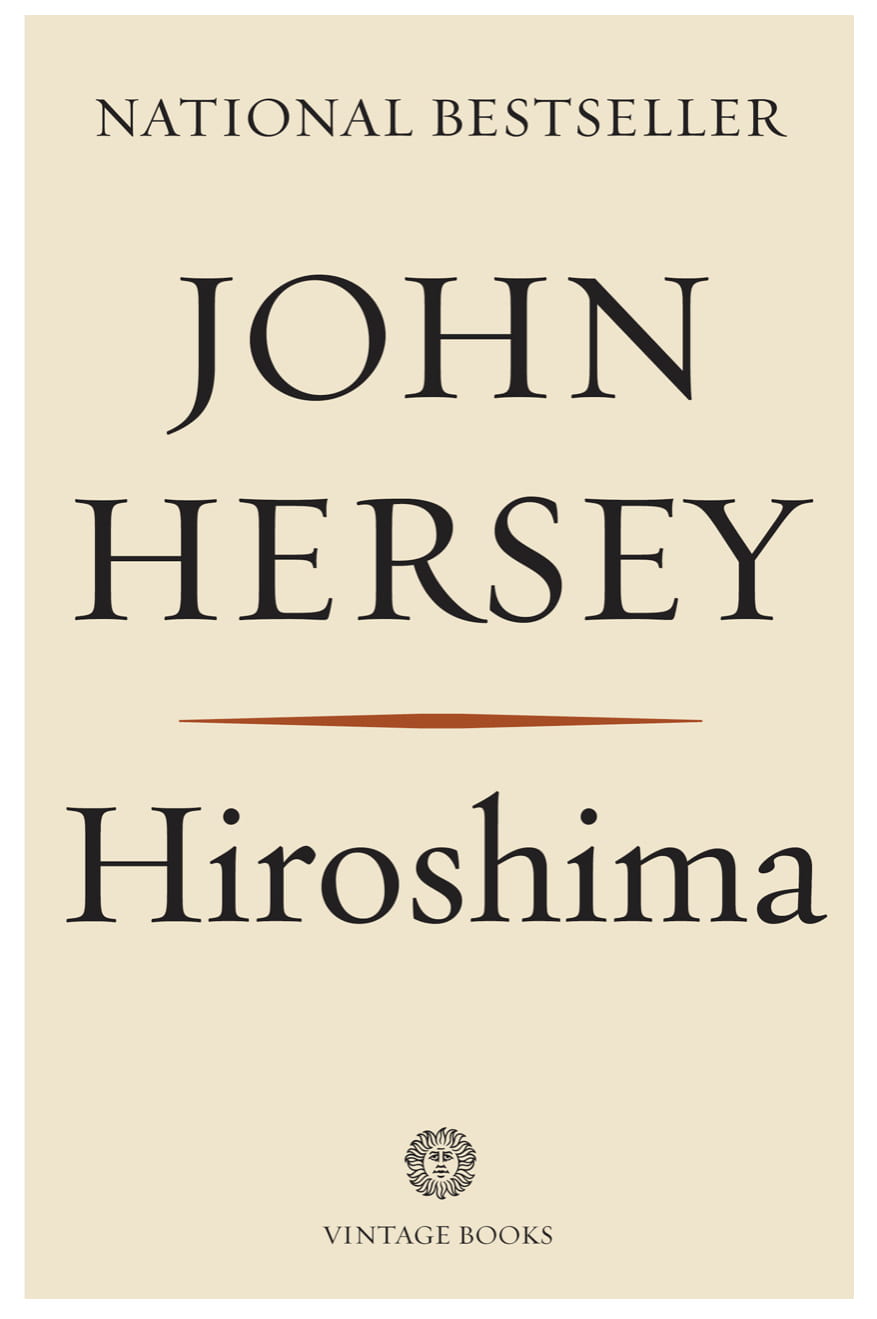Hiroshima by John Hershey is one of the most well known books based around the pacific war. It was first published in 1946, only a year after little boy was dropped on Hiroshima. It is known for being one of the first books to take a very anti-bomb perspective on what happened to Hiroshima and Nagasaki. Throughout these past few weeks I have had to read, write and talk about all the elements of the book and I have some critiques.
In our group discussions one of the things that was often highlighted was how well John Hershey did at humanizing the Japanese. “the book presents a Japanese view on life, and the stoicism and honour of the Japanese people in a way that seems human”- Collective group answer from table #2. This was in stark contrast to how most Americans felt about the Japanese people at the time, you have to remember that many Americans lost brothers, fathers or friends in the pacific theatre. Hersheys decision to tell the story from 6 different perspectives was a really good decision in my eyes. We got to see how each Japanese person reacted differently, their fears and theirs moments of bravery. By humanizing the Japanese people right from the beginning of the book, Hershey sets up his audience to be heavily impacted by what’s to come in the story.
Another aspect of the story that we as a group highlighted was the repetition of symbols for death or suffering. With one of my group members saying “By repeating the suffering over and over it emphasizes it in our mind”.Clearly Hershey really wanted to highlight and focus on how much suffering the survivors of the bomb had to go through. As I learned from Ms. Willemse, repetition is often not seen as a good way to create a solid argument. In this story though, I believe Hershey decided to repeat these symbols almost as a metaphor for how no matter how long ago the bomb was dropped on Hiroshima, the people of Japan still suffered in consequence. Like they can’t escape death and suffering in life, we can’t escape the symbols of those things in the book.
Members of my group were also very adamant about how accurate this story was. Saying “It is very accurate because it was written just after the bomb was dropped and is based of the true story’s of survivors”. Although for the most part I agree, I have to critique Hershey in a few cases. Some parts of the story, for an example “Someone in the crowd near the Nakamura family shouted, “It’s some Grummans coming to strafe us!” A baker named Nakashima stood up and commanded, “Everyone who is wearing anything white, take it off”, this part is so specific and detailed that I have trouble believing that a shocked and terrified person in great pain could remember and re-tell every part. How could they be sure it was the baker who said that? or that the person was specifically near the Nakamura family? This makes me think that Hershey added these descriptions himself. To me this takes away from the authenticity of the story and I think he could have skipped over these sections.
One thing that I hadn’t thought about until writing this is how Hershey never added an American perspective to the book. I think this was almost unfair to the army as it made them seem like the villains. In reality American troops also faced horrible acts of war, although maybe not quite as brutal as a nuclear bomb. I think if Hershey had added some of these American perspectives it would have highlighted the idea that war was horrible for both sides of the war, and would have also been less polarizing to the American public.
Evidently from the success of the book, and despite some of my critiques, Hershey is a master of literature and I have learned a lot from all of the calculated decisions he makes in his writing.


Leave a Reply